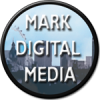A robust content strategy can transform your retail website into a powerful lead-generation tool. With careful planning and execution, your site can attract visitors, enhance their shopping experience, and drive more sales. At Mark Digital Media, we help businesses craft effective content strategies tailored to their objectives.
Table of Contents
- Why Content Strategy Matters for Retail Websites
- 5 Types of Content to Include on a Retail Website
- How to Optimize a Retail Website for Search Engines
- Conclusion: Building an Engaging Retail Website
📈 Why Content Strategy Matters for Retail Websites
A retail website is much more than an online catalog. It’s an extension of your brand, and its success depends on how well it engages visitors and guides them to a purchase decision.
Key benefits of an effective content strategy:
✅ Attracts and retains customers.
✅ Builds trust and brand loyalty.
✅ Increases website traffic and sales conversions.
🖋️ 5 Types of Content to Include on a Retail Website
📰 Blog
A blog provides detailed information about your products, company values, and industry insights. It’s also a great way to showcase customer reviews and engage with potential buyers.
📦 Product Pages
These pages are the backbone of your site. They offer detailed specifications, features, and pricing information, with clear call-to-action (CTA) buttons leading to checkout.
🌟 Landing Pages
Landing pages combine product promotions with links to related offerings. They often feature CTAs like “Contact Us,” “Buy Now,” or “Learn More,” driving conversions.
🎥 Videos
Video content builds credibility and boosts conversions by giving visitors a clearer idea of your product’s quality and use. Many customers feel more confident purchasing after watching a video demonstration.
📚 Guides
Guides provide practical advice and solutions, enhancing customer experience. For example, a fashion retailer might offer tips on styling outfits, while a tech store could include setup instructions for gadgets.
🔍 How to Optimize a Retail Website for Search Engines
🔑 Keyword Research
Effective SEO starts with identifying the keywords your audience is searching for. Use tools like SEMrush or Ahrefs to find popular search terms and analyze your competitors’ strategies.
🔗 Internal Links and Backlinks
- Internal Links: Connect pages within your website to guide users and help search engines understand your site structure.
- Backlinks: Secure links from authoritative external sites to improve your domain authority and rankings.
🧩 Content Clusters
Content clusters improve visibility by grouping related content around a central theme.
- Topic Clusters: Group content under broader categories, such as “Men’s Shoes” with subcategories like “Formal Shoes” and “Casual Shoes.”
- Product Clusters: Organize by product types, e.g., “Shirts” with subcategories like “Short-Sleeve” and “Long-Sleeve.”
- Customer Clusters: Target specific audiences, such as “Men,” “Women,” or “Kids.”
📊 Chart: Benefits of Content Clusters for SEO
📢 Conclusion: Building an Engaging Retail Website
Crafting an effective content strategy for your retail website involves more than just creating content—it requires strategic planning and optimization. From engaging blogs to detailed product pages, every element should guide visitors toward a purchase decision.
At Mark Digital Media, a trusted online marketing company, we specialize in building optimized, user-friendly retail websites. Let us help you attract, engage, and convert more customers. Contact us today to get started!
